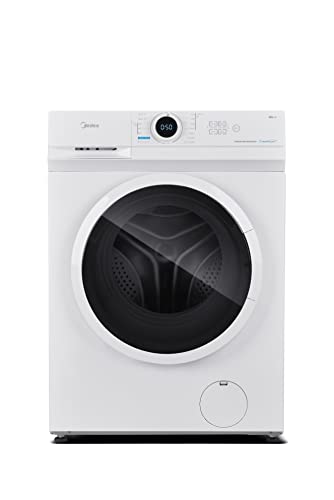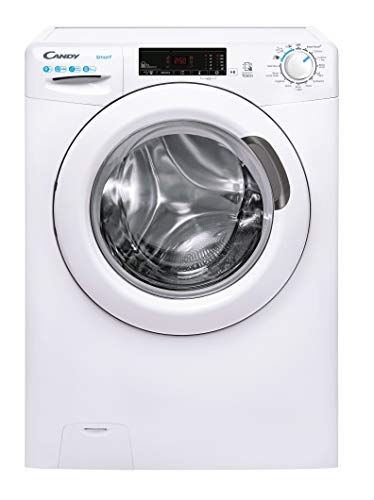Why No One Cares About 9kg Washer
페이지 정보
작성자 Lashawn 작성일24-06-03 16:40 조회595회 댓글0건관련링크
본문
 A 9kg Washer Machine Is a Good Size For a Family and Provides Plenty of Flexibility
A 9kg Washer Machine Is a Good Size For a Family and Provides Plenty of FlexibilityA 9kg washer machine is a great size for a family and offers plenty of flexibility. These machines are not as costly as they appear.
Kg is the weight of your dry laundry. It is the amount that a machine can wash efficiently in one cycle.
A drum with a larger capacity is great for bulky items like duvets. You can wash them at home, rather than taking them to the launderette.
Capacity
The capacity of a washer is the amount of laundry that it can hold. This measurement can be expressed in cubic feet or kilograms. To determine the volume, measure the radius of the tub (the distance from the center of the tub to the edge of its cover). Multiply the radius squared by depth of the tub. Divide this number by pi (3.14).
It can be tempting to choose a washer with a large capacity. However, you should remember that the heavier the load is, the more clothes will need to be washed. Overloaded laundry can damage the machine and reduce its longevity. You should also take into consideration the size of your family today and in the near future. Take into consideration the size of your children's clothing and bedding.
A cheap 9kg washing machines washing machine is perfect for large families and frequent washing machines since it can handle more washing in one go. It is also suitable for large families with many different fabrics, including linen, silk, and wool.
In addition to the large drum and the large drum, a 9kg washing machines for sale washer comes with a variety of features that make it easier for you to wash your laundry. This includes the sanitize cycle that employs low temperatures to clean your clothes without damaging them. AddWash is another feature that allows you to add laundry items as the rinse cycle is in motion. This allows you to wash your clothes more efficiently, while saving energy and time.
Some 9kg washer machines have a special down setting that is designed to clean your bedding and duvets. This will keep your family healthy and comfortable by removing pollen and bacteria from your bedding. It is recommended to clean your bedding at least every three months.
Flexibility
Front-loading washers that weigh 9kg come with a large drum that is able to handle large loads. It is possible to wash clothes for everyday use and bulkier items such as duvets with the same ease. Many models offer specific washing options, such as for delicate fabrics or certain garments such as woollens. This makes them a great option for laundry that is mixed.
Our capacity guide will help you figure out the size of drum that is appropriate for 9kg washer machine your household. A larger household will usually be able to handle a larger drum, whereas smaller households might find a smaller drum is adequate. Don't forget, however, that washing large amounts of laundry can be a time-consuming and energy-intensive. So, consider how often you wash it.
No matter the size the washing machine to be able enough to be able to adapt to your household and lifestyle. Look for features like delay start, waterPerfect plus and smart sensor technologies that cut down on detergent usage and energy cost. Choose a model that has an integrated dryer to maximize space and time savings.
Most modern washers feature an agitator that mixes detergent and water with agitation to create an effective cleaning action. This helps to reduce creases in your laundry and is particularly crucial for bulky items such as duvets.
You'll also need a washer that has a variety of programs to make the process of washing clothes faster and more efficient. Certain washers have a Quick Wash program that reduces the time of the cycle to only two hours. Some have woolen cycles that include steam, and dedicated cycles to reduce the amount of ironing. Some models even have a stop add go' function that allows you to add more laundry to the machine once it's started, which saves time and energy.
If you're worried that 9kg might not be big enough, there are 10kg models out there that can accommodate a king-sized duvet that is heavy without overflowing. Some washers are also smaller than normal washers. This makes them easier to fit under your counter without sticking out. This is particularly useful when you have a limited cabinet space.
Noise
Washing machines can produce quite a lot of sound especially during the spin cycle. This can be due to unbalanced loads or the vibrations that occur in the machine. It could also be caused by an unrelenting motor. The most common reason is an unsound drum. The debris of coins and other objects can be caught inside the drum and cause a great deal of noise during the wash cycle. These items are more frequent than people realise and it is important to inspect your washer frequently to ensure there is no debris entrapped within.
Other causes of excessive sound can include the incorrect temperature of the water or air filter that is dirty or issues with the bearings at the rear drum. The bearings are responsible for making sure that the inner drum is spinning in a smooth and efficient manner. If they're damaged they can cause loud squeaking or grinding sounds. If you notice any of these problems it is recommended to contact your manufacturer and request a replacement part.
Another reason for noise is air turbulence which is caused by unbalanced loads inside the machine. This can cause vibrations in the cabinet, which can cause acoustic noise. This kind of sound may be difficult to identify, and can have an impact on the performance of the appliance overall.
A method of assessing the acoustic performance of household appliances using a novel technique has been developed. This technique blends sound intensity measurements and vibration measurements. This allows the acoustic efficiency of washing machines to be measured precisely. This can help manufacturers improve their products by cutting down on noise.
The experiment was conducted using a front-load washing machine that has a capacity of 9 kg. The experiment included an aluminum tub suspended from the base of the machine by springs and three free-stroke friction shock absorbers. The cabinet's vibrating and the movement of the drum were recorded, and their acoustic emissions were evaluated. These recordings were used to calculate the acoustic strength of each transmission path. The results showed that non-resonant paths had the greatest impact on the highest frequency. The effect diminished with increasing frequency. The radiated path, on the other hand, contributed to all frequencies and was most prominent at the 125 Hz frequency.
Energy
The energy efficiency of washing machines is measured by the amount of water and electricity it consumes in a single cycle. It can be increased or decreased based on the size of the washing load and the energy-saving features that are selected. For instance, eco-modes allow smaller loads to be cleaned using less energy and water. Other features that save energy include a delayed start, stain care settings, and variable spin speeds.
In general, machines with larger capacities consume more energy. If the washer comes with energy-saving features, its consumption will be lower than a machine of the same size, but with no energy-saving features.
The rated capacity of a washing machine is measured in kilogrammes of cotton. This measurement is the maximum amount dry laundry a machine can wash efficiently in a single cycle. The greater the capacity, the greater number of clothes it can fit into a cycle, making it suitable for large families or for those who wash a lot of bulky items.
In the past decade there have been a lot of new washing machines have appeared on the European market, with ever-increasing ratings capacities. In the same time, European household sizes have been decreasing. This is a problem that could hinder the attainment of the energy efficiency goals set by policymakers for these appliances.
This paper focuses on this divergence and provides policies to counter it. These include the provision of information on the programme duration on the label for energy as well as the inclusion of time as an integral element of the energy efficiency index calculations and the setting of a duration cap.
 This paper presents a modeling study that explores the impact of these policies on the evolution of market of washing machines with different rated capacities and programme duration. The study shows that scaling the energy efficiency label recovers some of its differentiation potential and makes it more likely that washing machines will achieve higher energy efficiency classes under a business as usual scenario. The rescaling also leads to an improved implementation of energy efficiency policy goals.
This paper presents a modeling study that explores the impact of these policies on the evolution of market of washing machines with different rated capacities and programme duration. The study shows that scaling the energy efficiency label recovers some of its differentiation potential and makes it more likely that washing machines will achieve higher energy efficiency classes under a business as usual scenario. The rescaling also leads to an improved implementation of energy efficiency policy goals.댓글목록
등록된 댓글이 없습니다.



